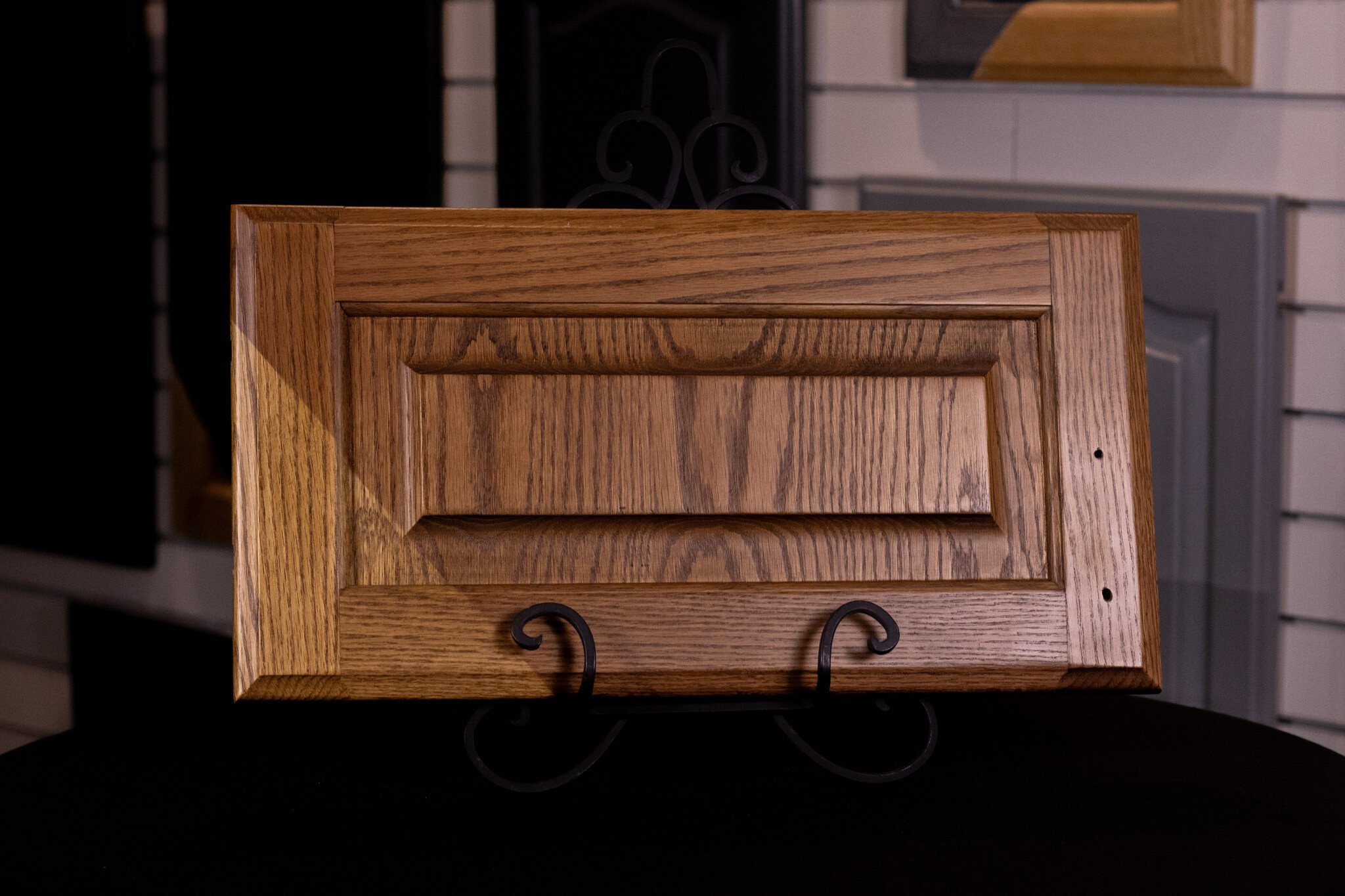

April 11th, 2025
3 min read

If you're thinking about updating the look of your cabinets, furniture, trim, crown molding, or even wood deck, you might be considering a lighter stain for a fresh, modern feel. Many homeowners love the idea of a bright, airy wood finish, but what they often don’t realize is how difficult and expensive it is to achieve that look when working with previously stained wood.
At Brush & Roll Painting, we’ve been refinishing wood surfaces in Omaha since 1996, and we know firsthand what it takes to change stain colors. Lightening stained wood isn’t impossible, but it’s one of the most challenging refinishing projects. It requires extensive prep work, and even then, results can be unpredictable.
In this article (and in the video below), we’ll explain why going lighter is so difficult, what makes darkening stain a much easier option, and what you can expect when hiring a professional for the job.
Changing stained cabinets, furniture, or trim from dark to light isn’t as simple as just applying a lighter stain over the top. Unlike painting, where a new color can cover the old one, stain works by soaking into the wood grain. To successfully lighten wood, you must remove almost all of the old stain first.
To go lighter, every bit of the old stain and topcoat must be stripped away so the new stain can absorb evenly. This typically requires:
 2. Wood Grain and Stain Absorption Limitations
2. Wood Grain and Stain Absorption LimitationsThe natural grain of the wood plays a big role in how stain is absorbed. Some areas may hold onto darker tones more stubbornly, meaning that even after extensive stripping, the wood might still have stain left in its pores. This can make it nearly impossible to achieve a light, uniform color.
Because stain works by penetrating the wood, any inconsistencies left behind from the stripping process will be noticeable in the final product. Areas that retained more of the previous stain may turn out darker than others, leading to a splotchy or uneven appearance.
If you want to change the look of your stained cabinets, furniture, or trim, opting for a darker shade is almost always the better choice. Here’s why:
Unlike lightning stain, darkening wood usually requires far less prep work. The existing finish may need a light sanding or cleaning, but a complete removal of the previous stain isn’t necessary. A darker stain can blend with the existing stain, creating a smooth, even finish.
Dark stains naturally mask minor imperfections left behind from previous stains. If there are small areas that didn’t sand out perfectly, they’re far less noticeable when going darker. This means you’re more likely to get a professional-looking result without the risk of blotchiness.

Because stripping and sanding wood down to bare grain takes so much time and effort, going lighter tends to be more expensive. Professional painters will need extra hours (or even days) to properly prepare the wood for a lighter stain, which can increase labor costs significantly. By contrast, darkening the stain requires far less labor, making it a more cost-effective, in comparison to going darker.
Darker stains can range from just a shade deeper than your current stain all the way to nearly black. Whether you want a subtle enhancement, a different dark tone, or a bold transformation, going darker offers more versatility with less hassle.
If you decide to stain your cabinets, furniture, or trim darker, hiring a professional painter like Brush & Roll Painting ensures that the job is done correctly and lasts for years to come. Here’s what you can expect from a professional refinishing service:
A professional will assess your cabinets, furniture, or trim’s current condition, wood type, and existing stain and help you determine the best approach for refinishing.

Using high-quality products and techniques, a professional will apply the new stain evenly to achieve a consistent, polished finish.
If you’re looking to refresh your cabinets, furniture, or trim without breaking the bank, staining them darker is usually the best option. It’s easier, more predictable, and more budget-friendly than attempting to go lighter. While light stain colors can be beautiful, achieving them on previously stained wood is often unrealistic due to the challenges of removing old stain completely.
Brush & Roll Painting has been helping Omaha homeowners with wood refinishing since 1996. Our team specializes in high-quality finishes that stand the test of time. If you’re considering updating your cabinets, furniture, or trim with a darker stain, we’re happy to help guide you through the process.
Click the button below to get a quote and find out how we can help transform your wood surfaces with a fresh, modern stain color!
If you are not ready to get a quote, but are curious about how much it would cost to stain your cabinets or trim, click the button below!
Kaylea is the Brush & Roll Painting Content Manager. Kaylea is a Journalism and Media Communications summa cum laude graduate with a minor in Marketing from the University of Nebraska at Omaha. Kaylea manages the marketing for Brush & Roll Painting.